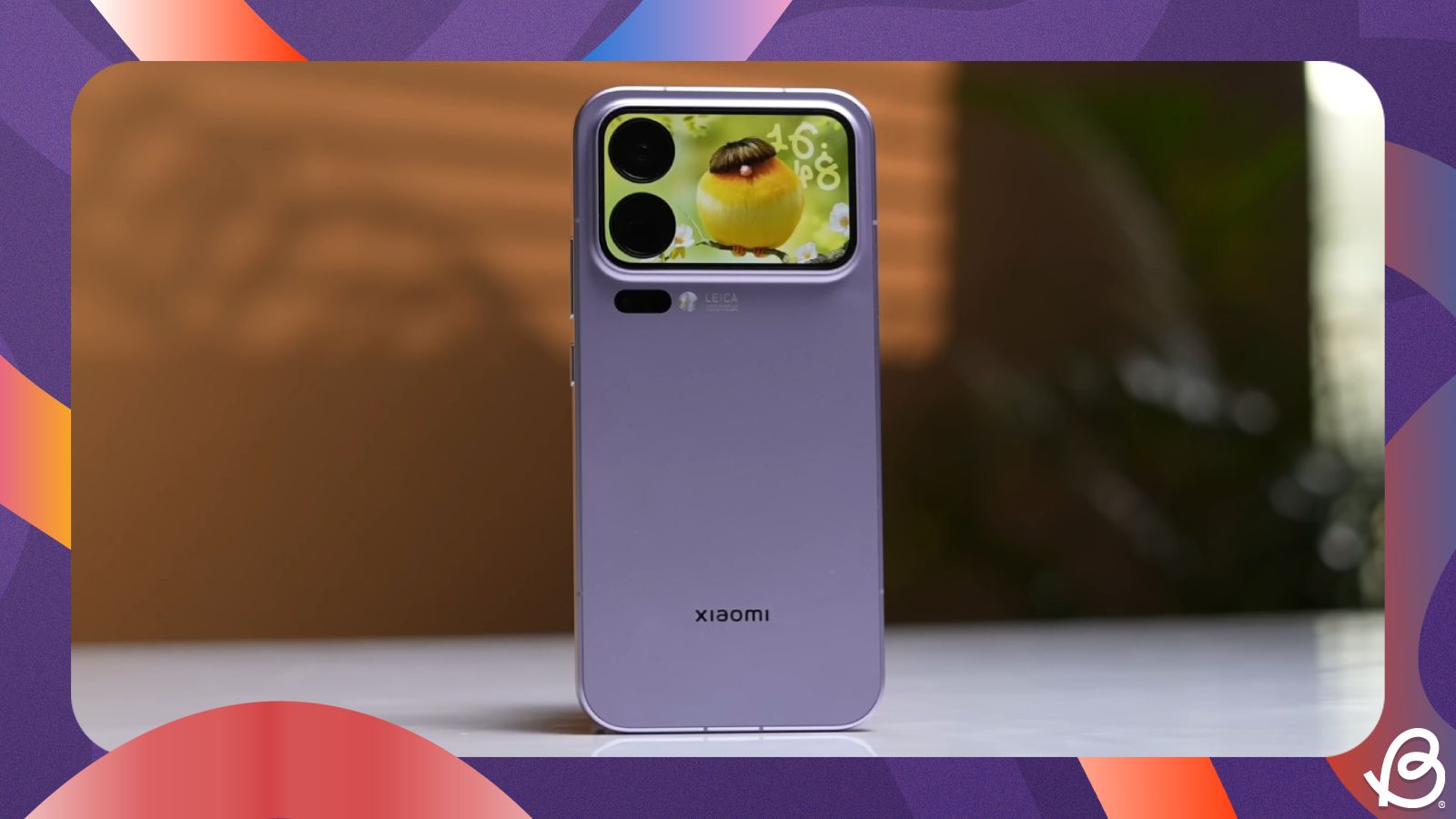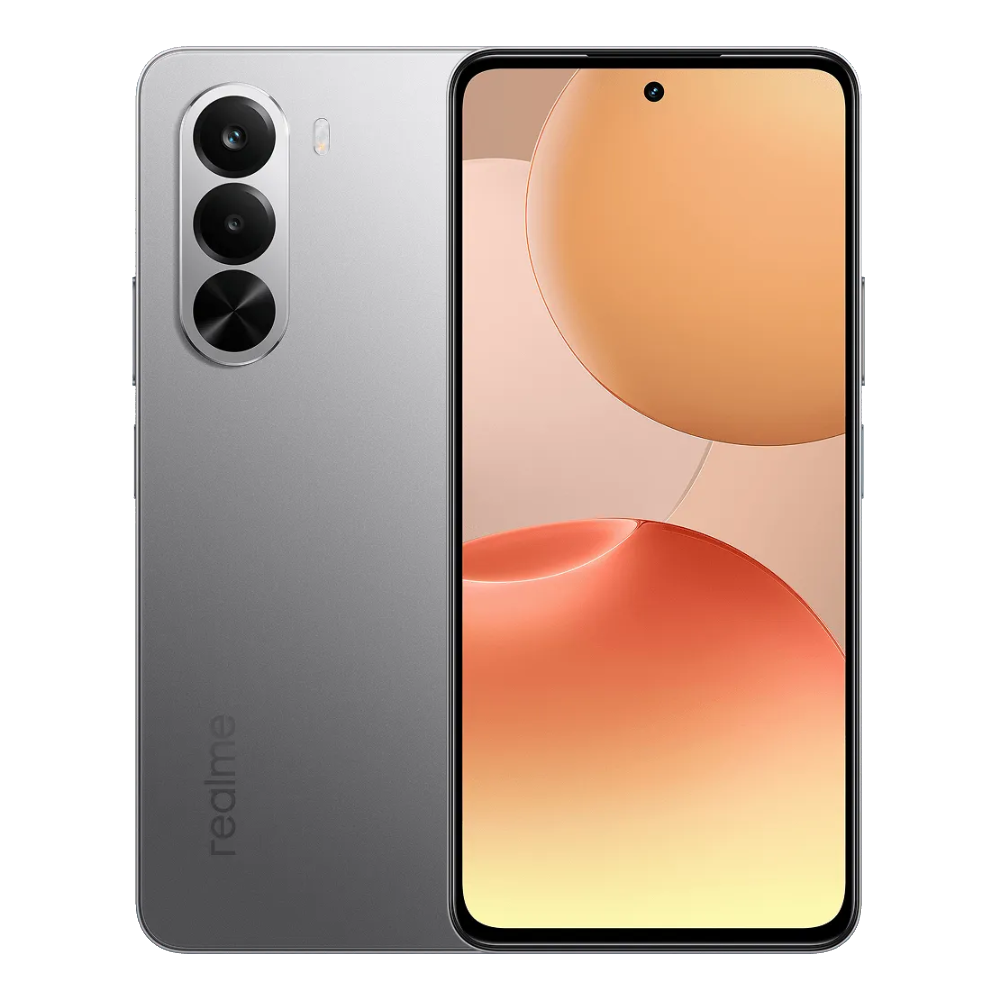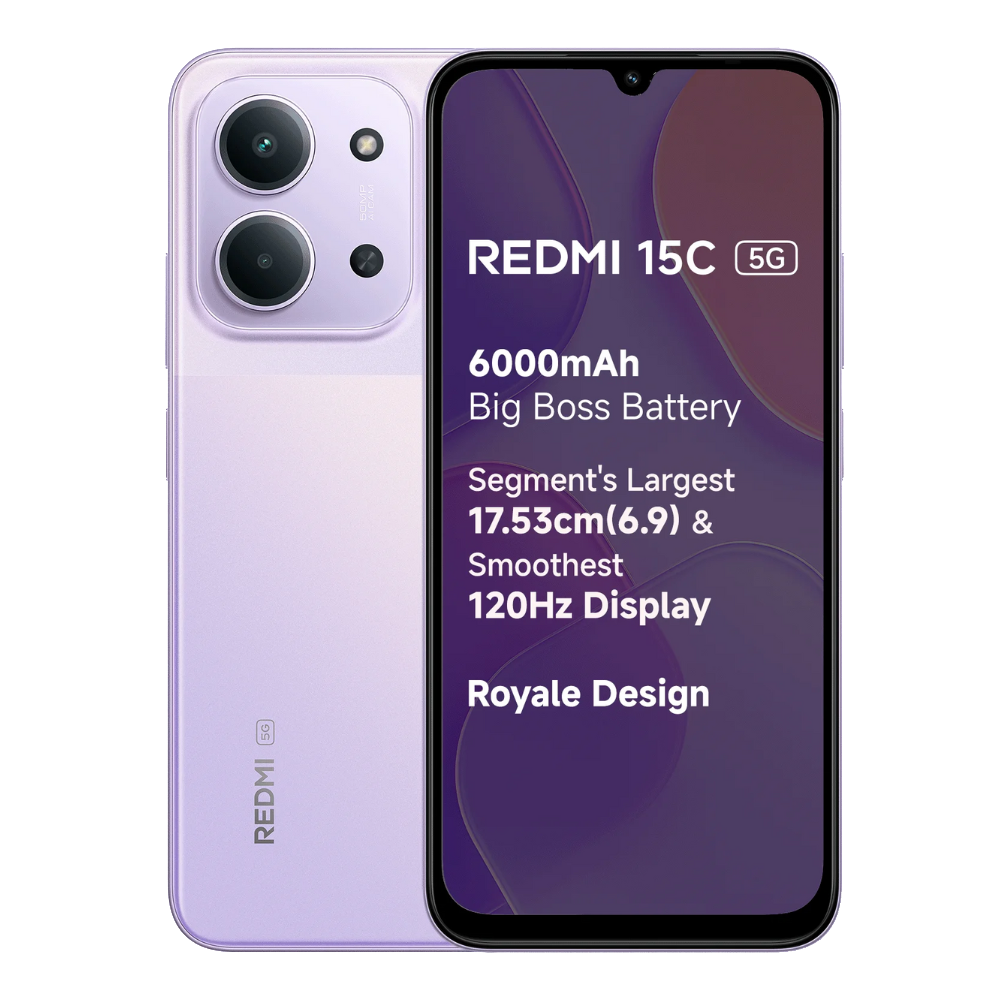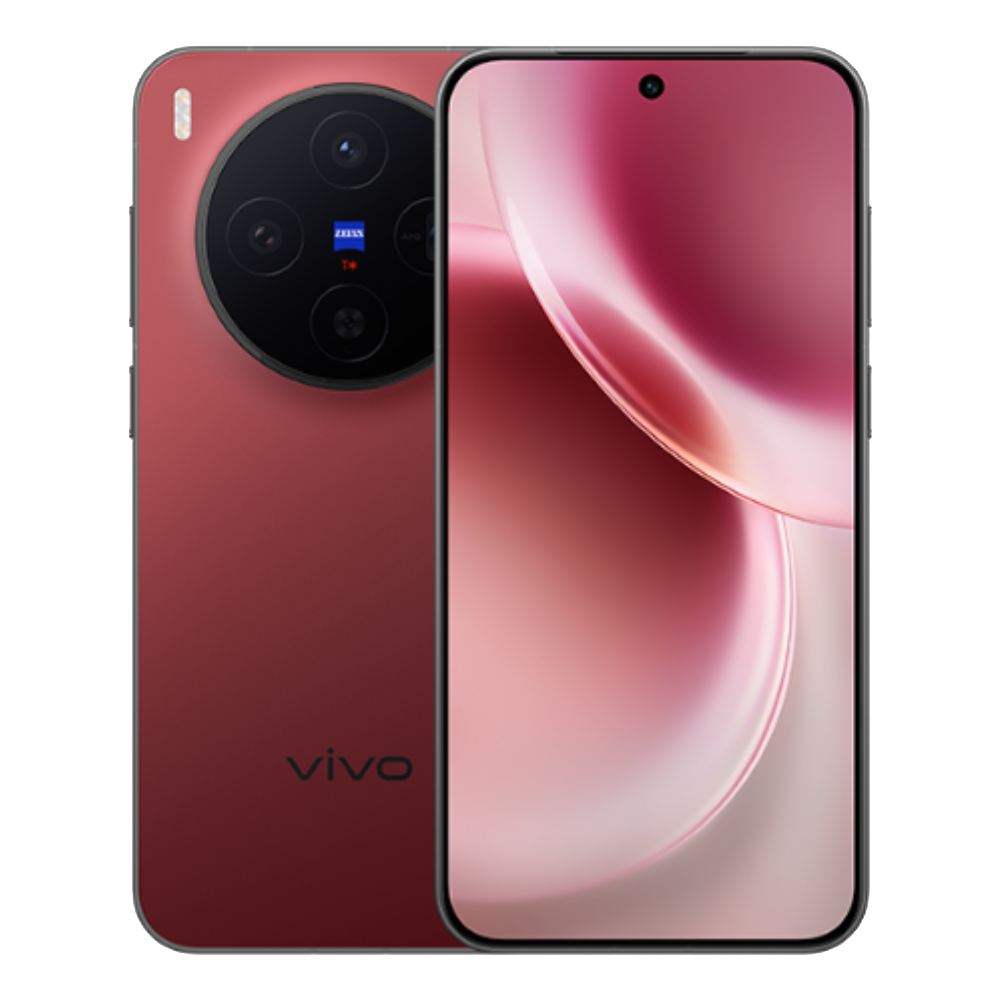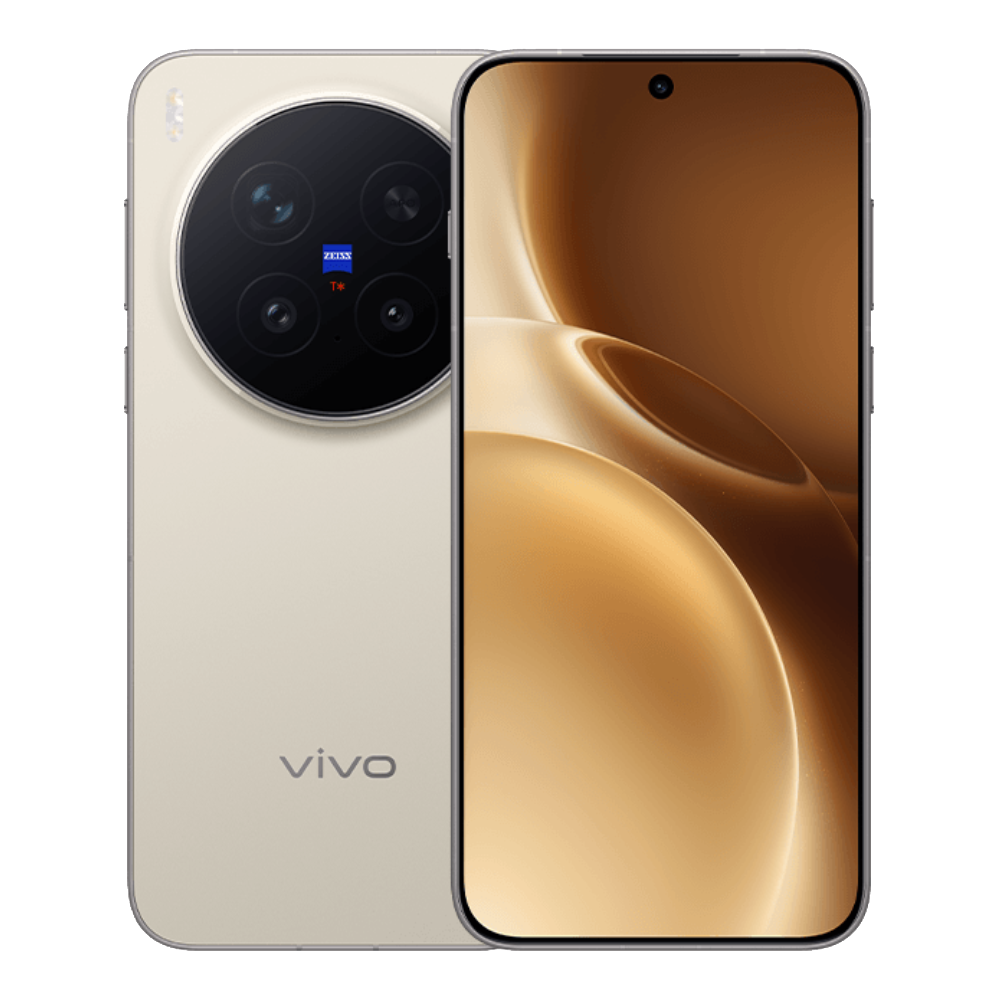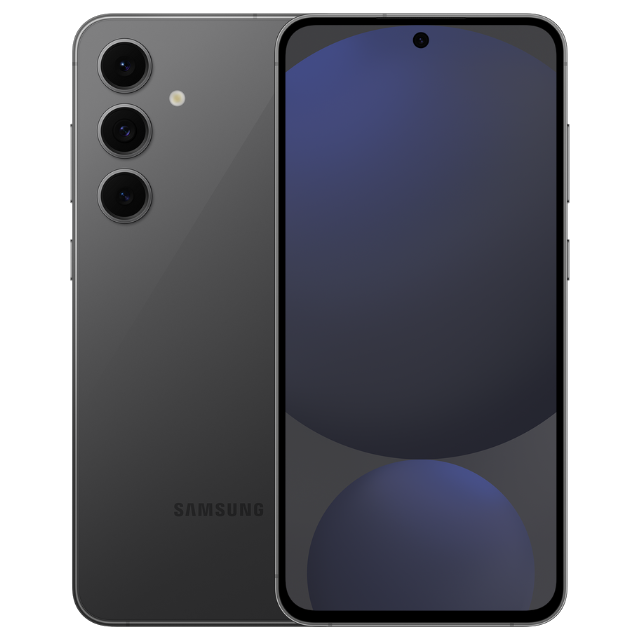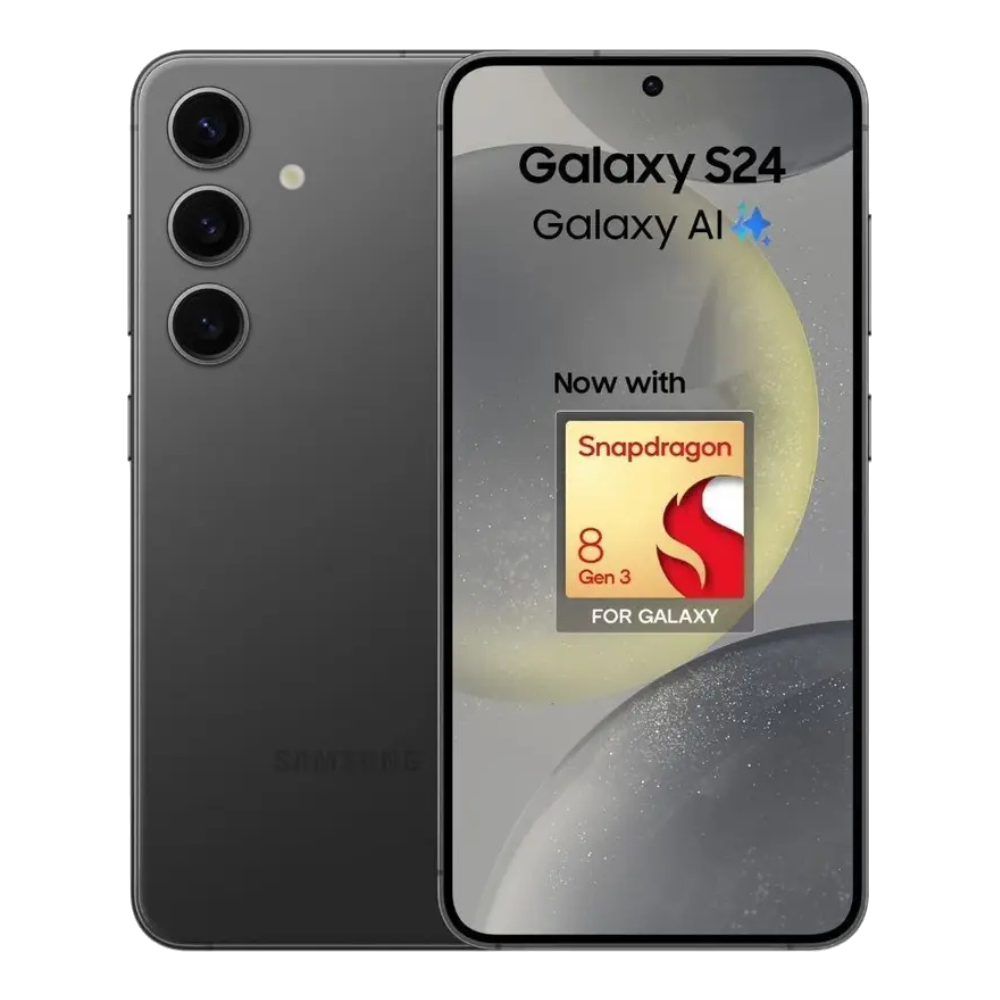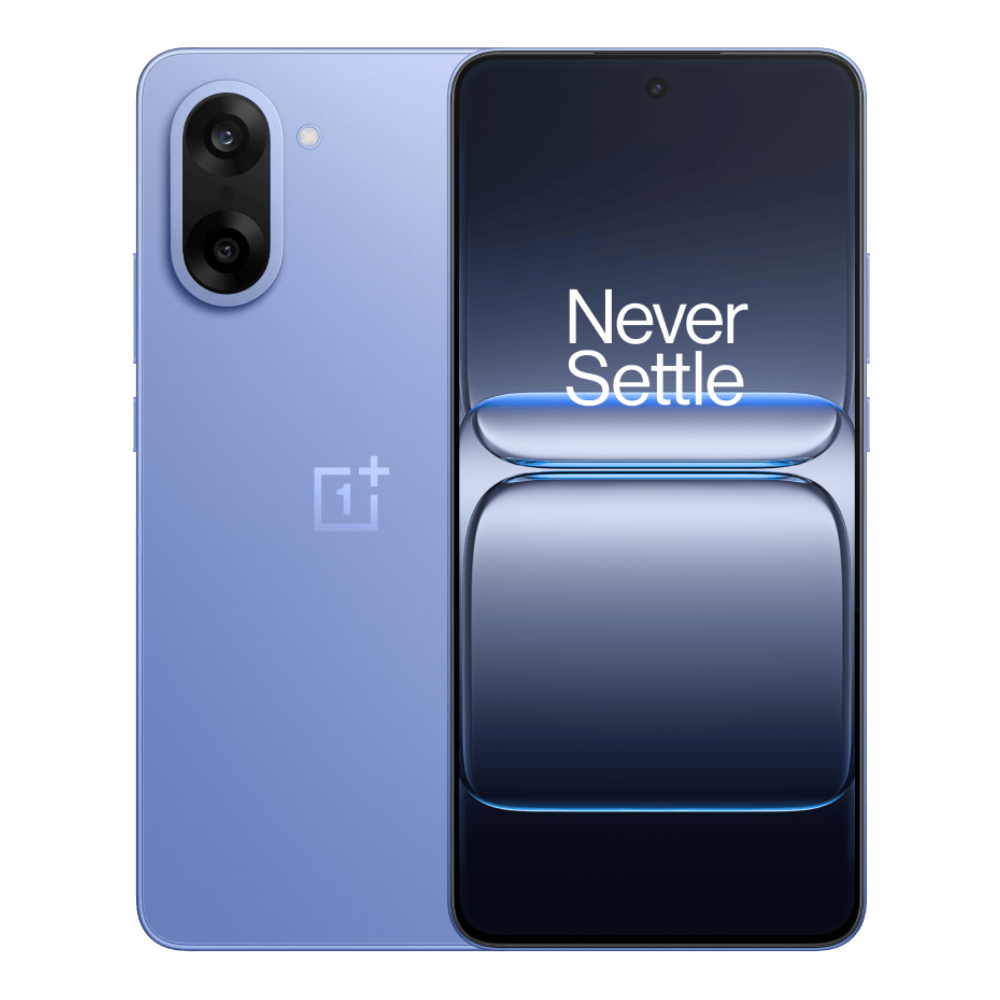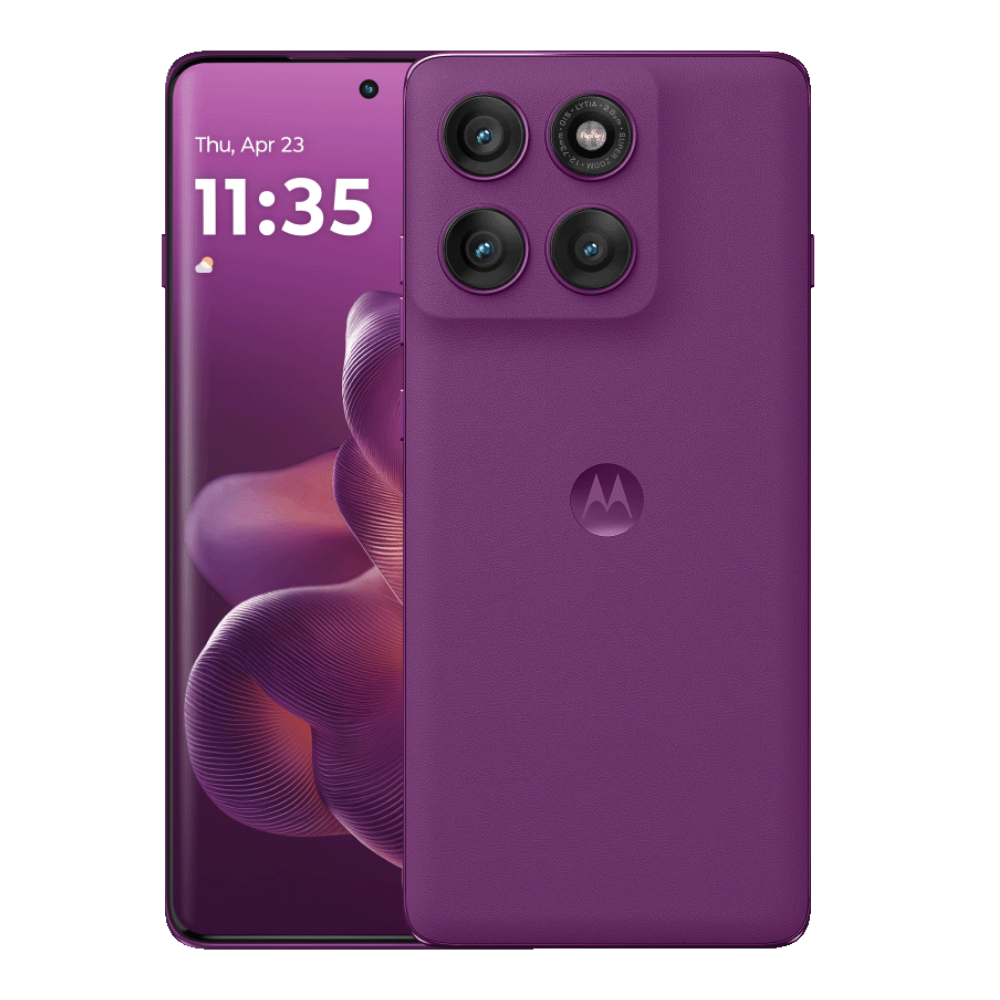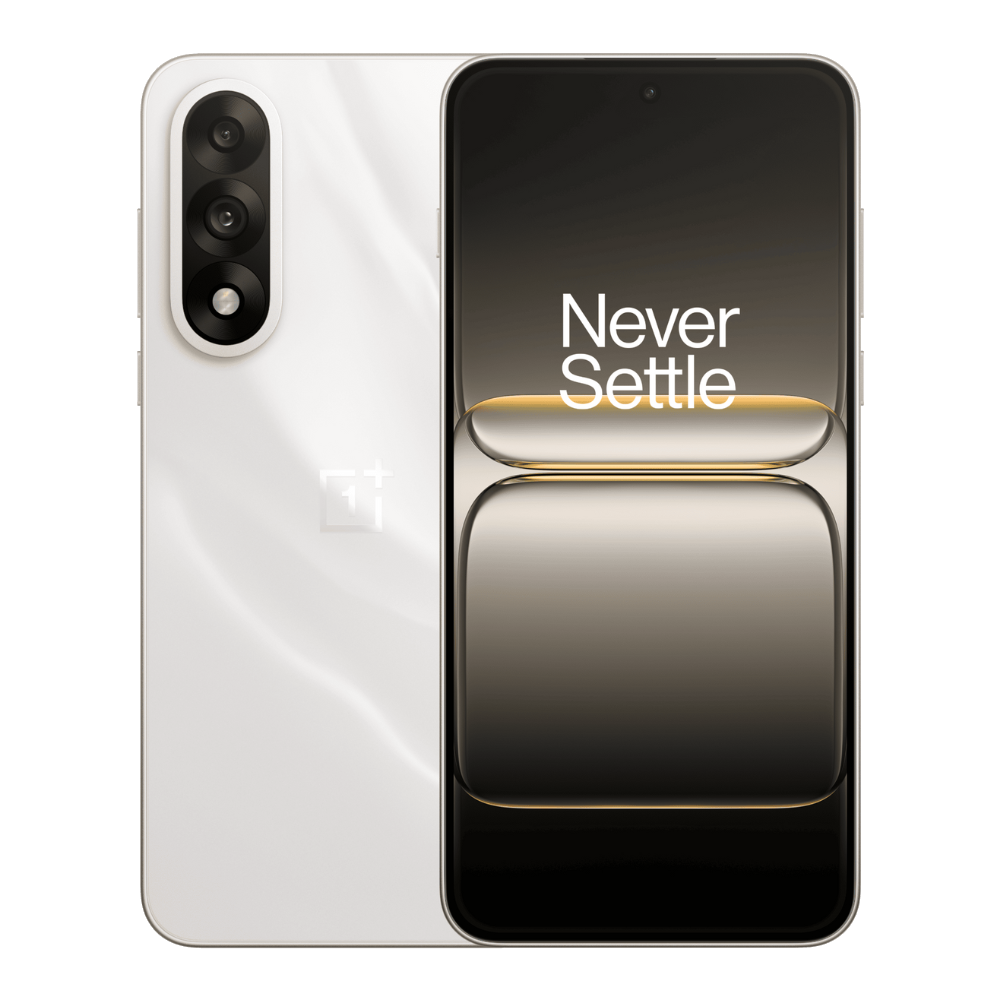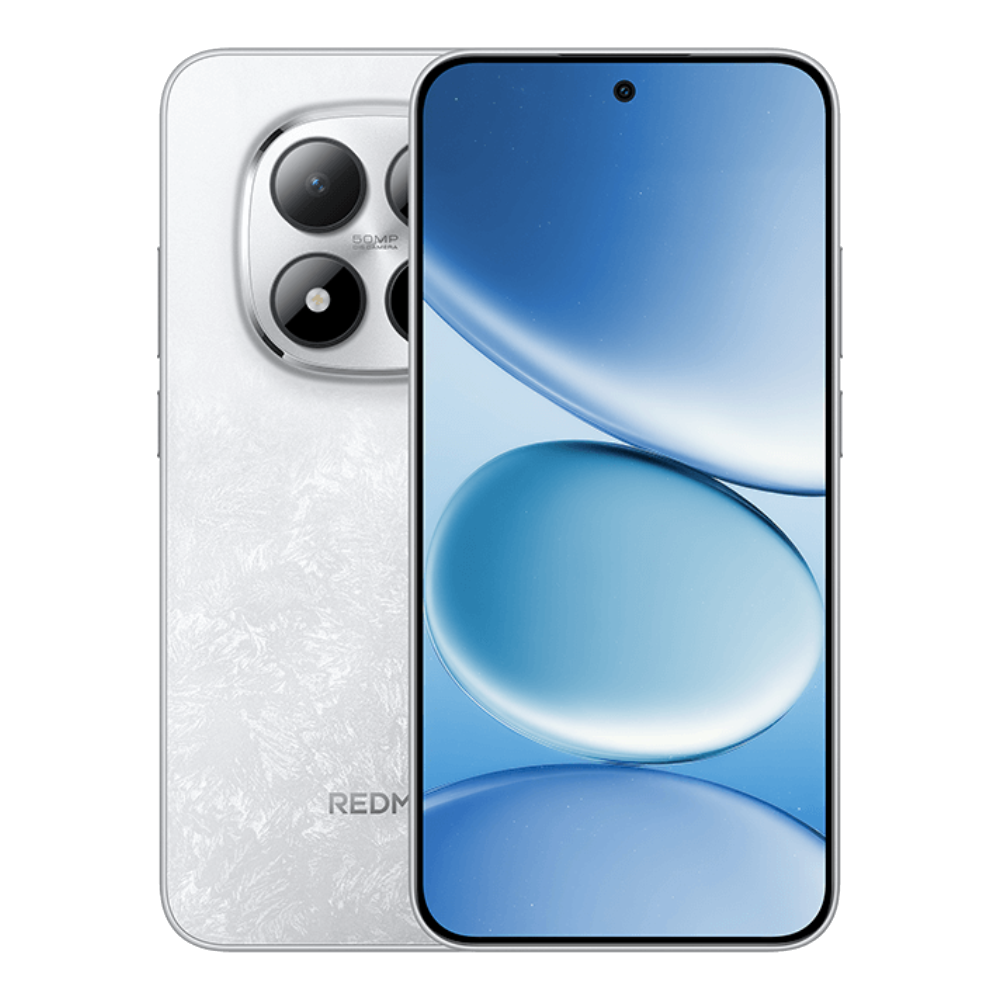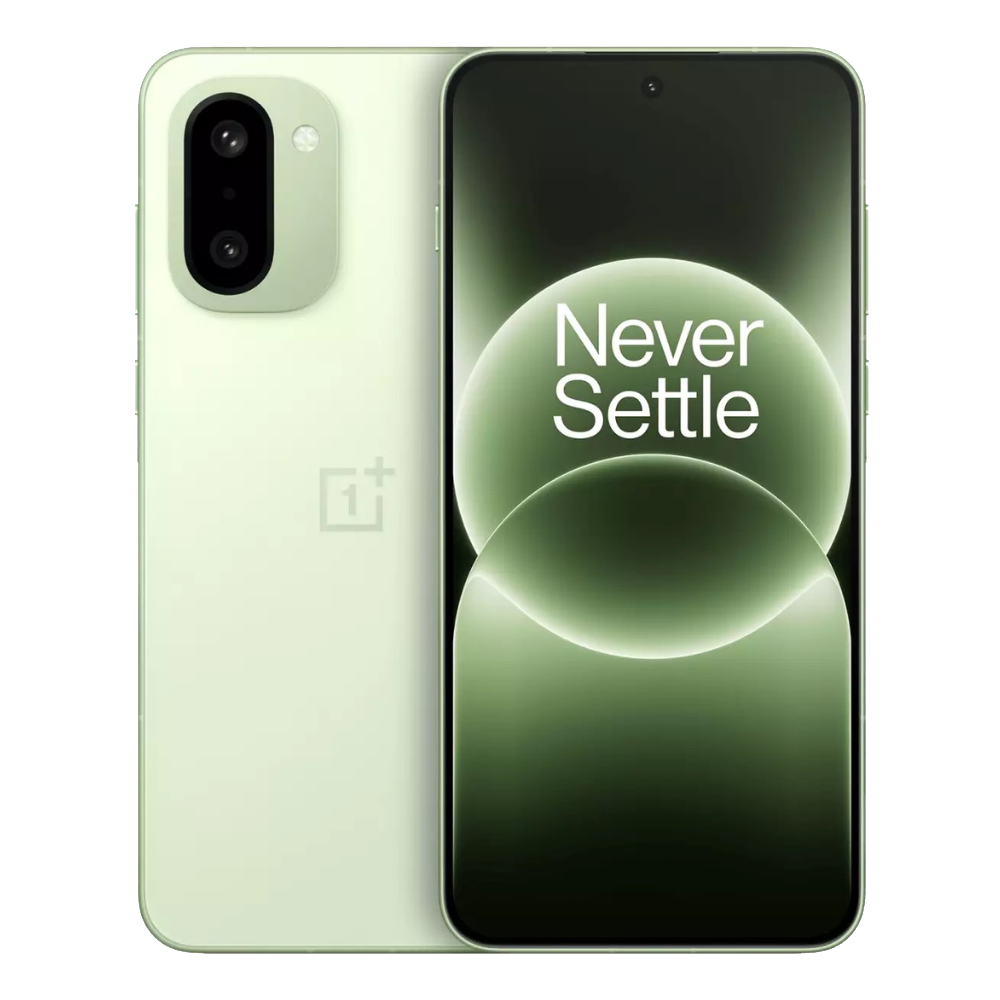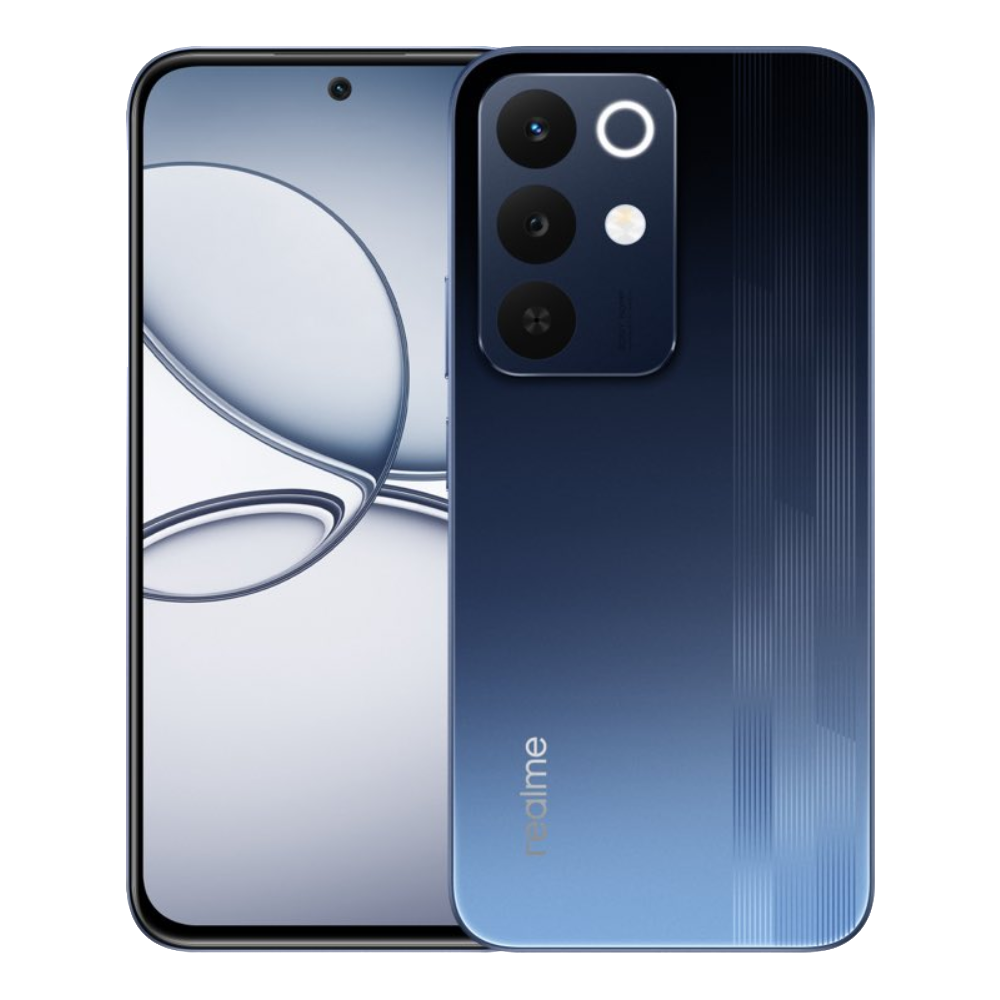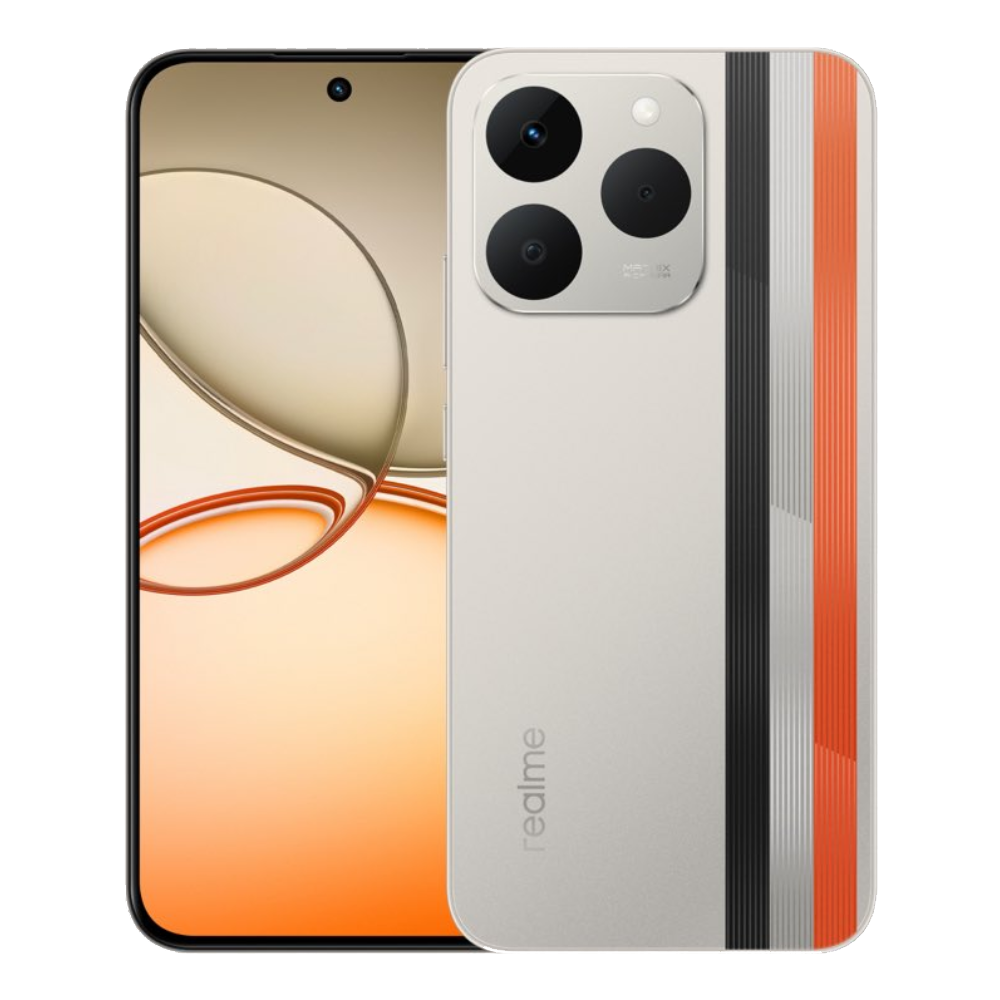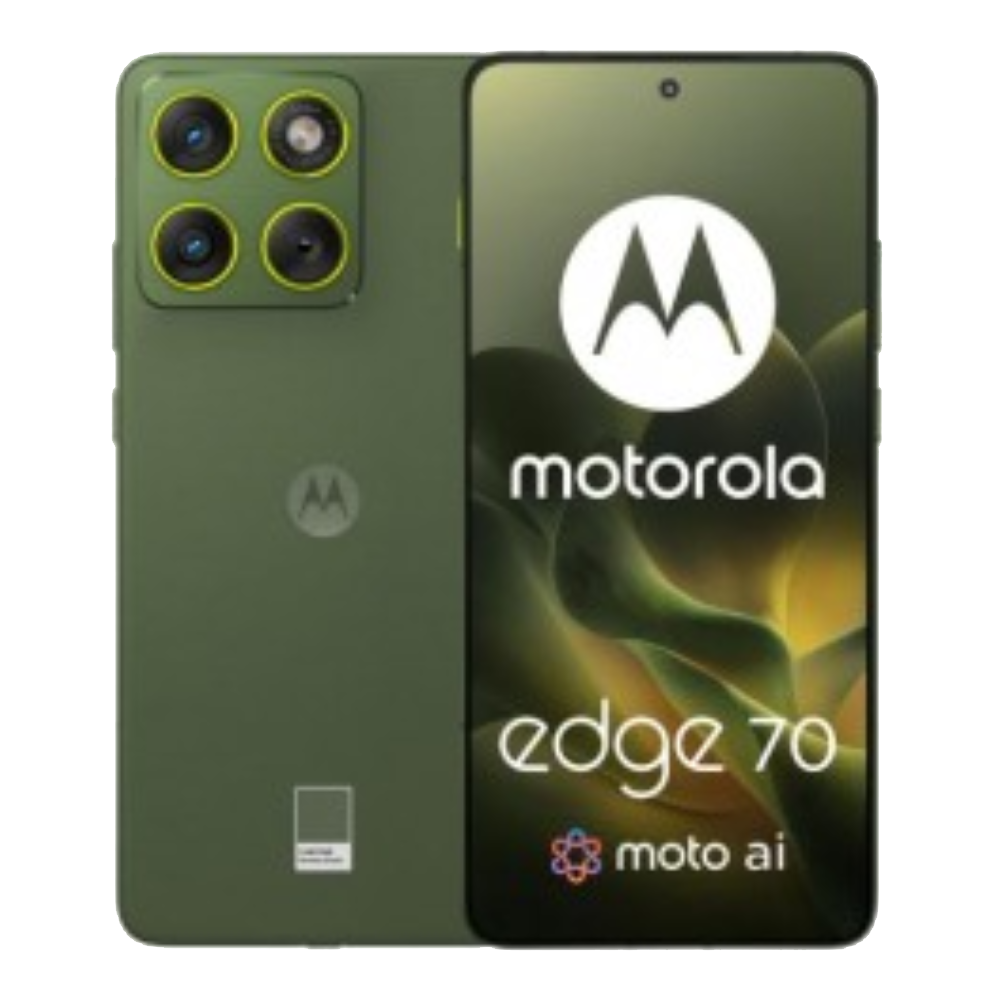
Beebom
Rating9
The Xiaomi 17 Pro Max looks like an iPhone 17 Pro Max at first glance but its secondary display quickly sets it apart. With a massive AMOLED display, Snapdragon 8 Elite Gen 5 performance and Leica cameras, it impresses in every core area. Meanwhile, the secondary display adds playful novelty to an already ambitious flagship.
Pros
Premium build with aluminium frame and IP68 rating
Unique secondary rear display for selfies, widgets, and gaming
Snapdragon 8 Elite Gen 5 ensures butter smooth performance
Massive 7,500mAh battery with 100W fast wired charging
Quad 50 MP Leica cameras deliver detailed and cinematic shots
HyperOS 3 offers polished and intuitive UI
Cons
Rear display could feel more like a novelty than a necessity
Ultra-wide camera could perform better
On a random Monday, I was handed the iPhone 17 Pro Max and asked to frame a first impression of it. It wasn’t till I flipped to see the back that I realised something was off about this iPhone, and there’s a second screen? Turns out, it was the Xiaomi 17 Pro Max, and I had just about a couple of hours to wrap my head around this rather strange iPhone.
The latest Xiaomi flagship feels familiar at first glance but has some surprising tricks up its sleeve once you start using it. Powered by Snapdragon’s latest and greatest processor and fueled by a massive 7,500mAh battery, here are my first impressions of the Xiaomi 17 Pro Max.
Xiaomi 17 Pro Max Key Details
- Adreno 840
- 100Watt (wired)
- Wireless Charging Supported
- Charger in the box
Hybrid Stabilization
8K@30fps
- 2K AMOLED
- LTPO
- Dolby Vision
- 512GB (UFS 4.1)
- 4k@60fps
- Glass (Back)
- Aluminium Frame (Side)
- IP68 (Dust and Water Resistant)
- 6 year(s) of OS Update
Xiaomi 17 Pro Max Design and Build
- 162.9 x 77.6 x 8.0 mm
- 219 grams
- IP68 rating
The Xiaomi 17 Pro Max is easily one of the most premium-looking phones the brand has ever made, if you ask me. It’s unapologetically iPhone-inspired, right down to the squared edges and overall finish.
The camera module instantly gives off iPhone vibes as well. However, instead of a bump, Xiaomi went a step further and fitted a secondary display, which is not just for show and can be pretty useful. I’ll get to that in a bit.
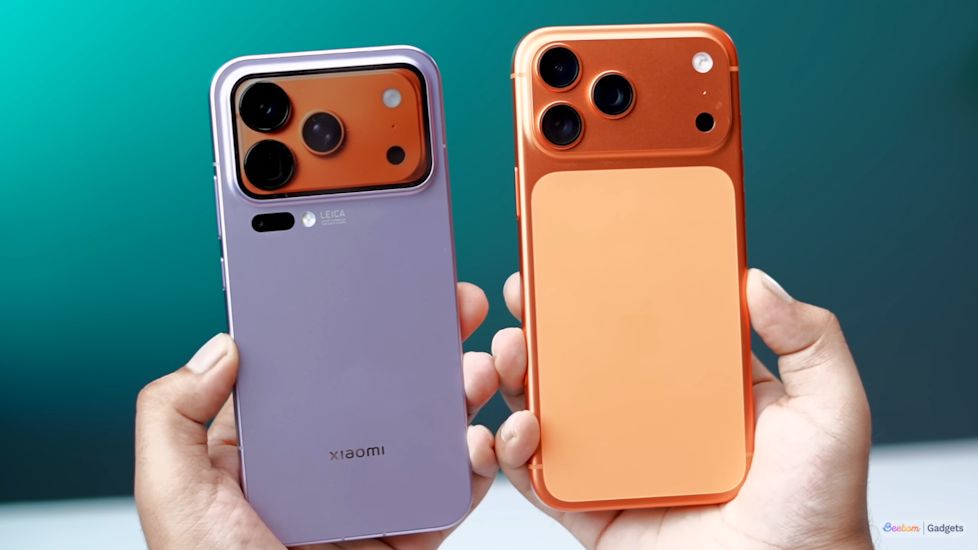
I’ve been using the Smoked Purple colour variant of the Xiaomi 17 Pro Max, and it honestly looks beautiful. The in-hand feel is also surprisingly premium with that aluminium frame and glass back protected by Dragon Crystal Glass 3.
The phone is thinner at 8mm and lighter at 219 grams than the iPhone 17 Pro Max, whose 8.75mm body weighs 233 grams. It’s quite impressive, considering Xiaomi managed to squeeze in a 7,500mAh battery here, which is about 50% larger than what Apple packs.
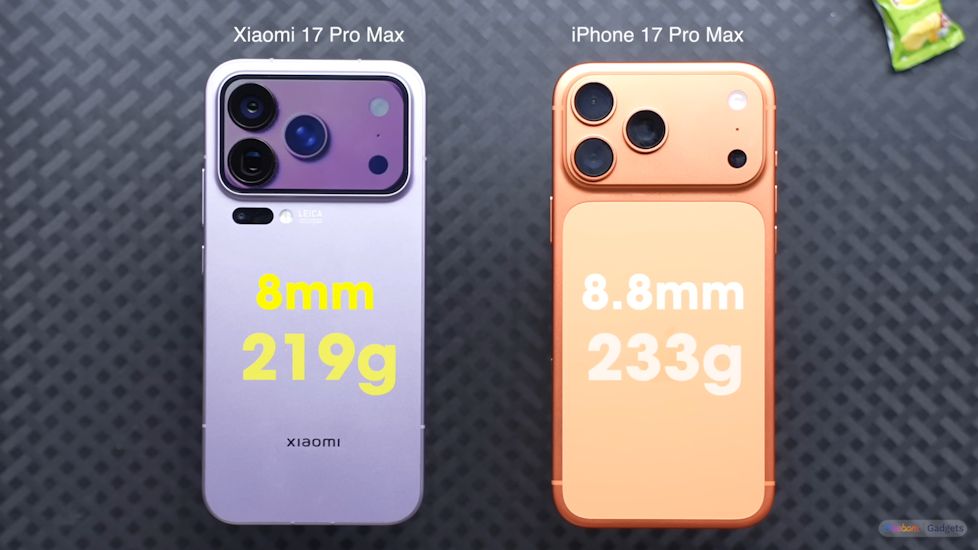
The flagship is quite durable too, with an IP68 rating thrown into the mix. As for buttons, there is the power button and volume rocker on the right, while the left side is completely empty. The buttons themselves are very tactile and don’t wobble at all.
Overall, the Xiaomi 17 Pro Max looks familiar but feels distinct. It’s like the design team had an iPhone 17 Pro Max reference image to work with and decided to have fun with it. I’m not complaining, though.
Xiaomi 17 Pro Max Display Quality
- 6.9-inch 120 Hz LTPO AMOLED main display, 2608 x 1200 resolution, Dragon Crystal Glass 3 protection
- 3,000 nits of HDR peak brightness (as per our testing)
- 2.83-inch 120 Hz LTPO AMOLED secondary display, 976 x 596 resolution
As soon as I moved to the display, I couldn’t help but appreciate the super sleek bezels here. The display is massive, bright and fluid. I tested it outdoors and even under harsh sunlight, the screen stayed completely legible. On our office Luxmeter, the phone hit 1,600 nits of HBM and 3,000 nits of HDR peak brightness.
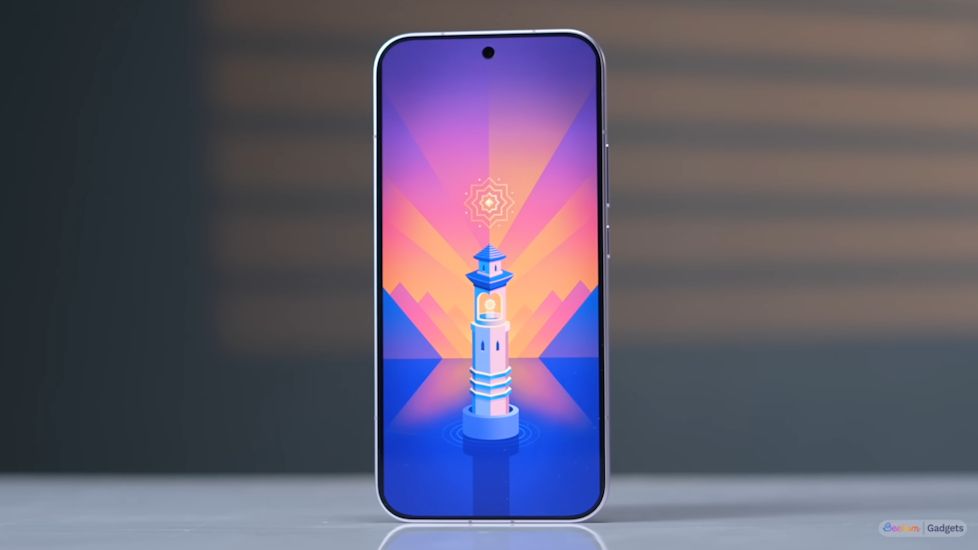
I watched a couple of 4K YouTube videos and the experience is top tier. Colours are vibrant and try to stay as true to life as possible without going overboard.
The stereo speakers are also very loud, clear and backed by Dolby Atmos. Watching content feels immersive due to this and there’s no doubt that the Xiaomi 17 Pro Max nails the multimedia experience.
However, it’s the rear display where Xiaomi got creative. The secondary display of the Xiaomi 17 Pro Max is one of those features that you think you’ll never use, and you probably won’t, until you actually do.
You can set it to show custom widgets, animated pets and even AI-generated wallpapers based on your own photos in multiple styles (Anime, 3D, Dynamic, etc). If not that, you can use it as a quick music controller for when your friends are over, and you want to play some music without spending time on the main display.
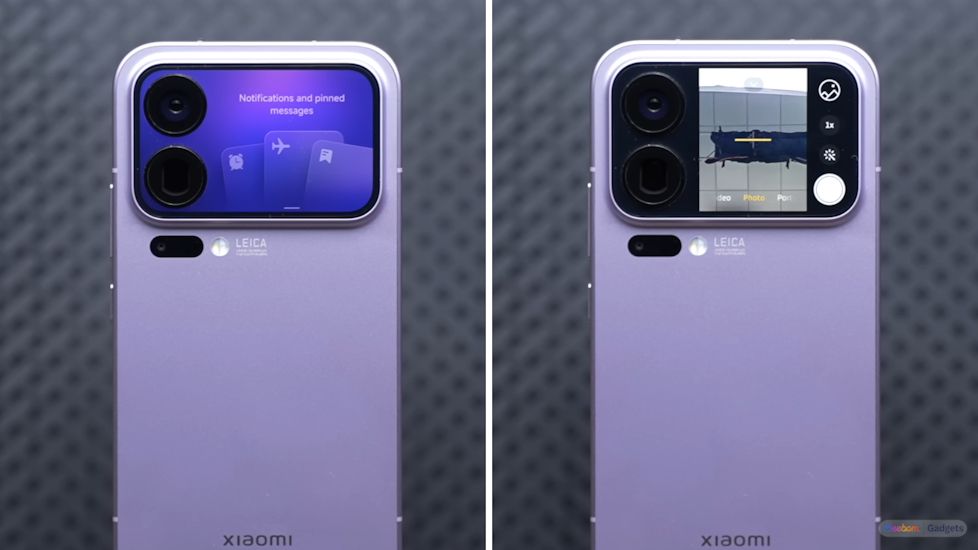
Additionally, the rear display also supports some social media applications but since I had the China variant with me, there wasn’t anything here to tickle my fancy.
The Xiaomi 17 Pro Max secondary display can also turn into a mini gaming console with the retro handheld gaming console case that's sold separately. Looks-wise, it took me right back to the golden Nintendo Game Boy era. Sadly, we couldn't get it working on our China unit.
However, after watching a few Angry Birds 2 and Space Invaders gameplay on the rear screen, I will say that this is quite a unique implementation and the commendable hardware makes it a super smooth experience. Besides, even the secondary AMOLED display is bright and backed by Dolby Vision, making it a treat to the eyes.
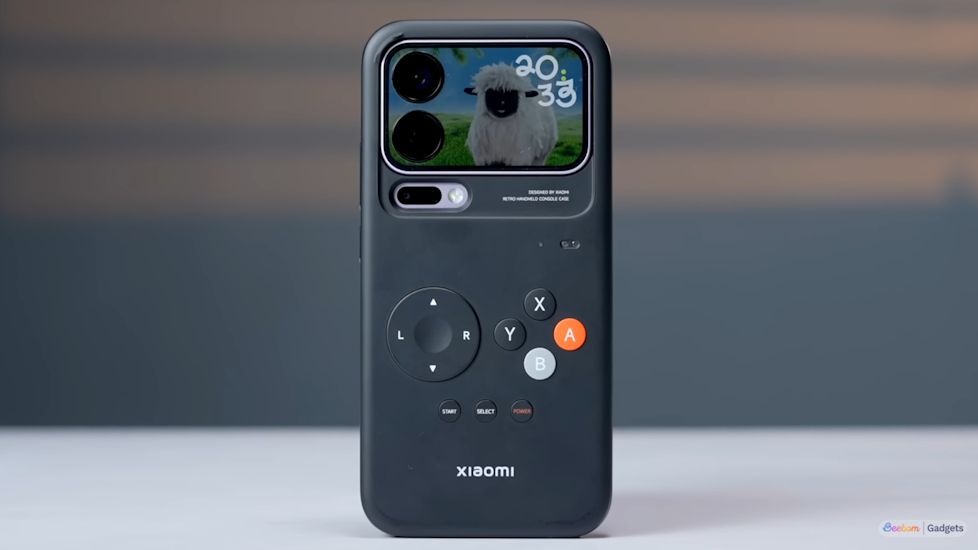
The best part is that you can use it as a selfie viewfinder and shoot at up to 8K 30 FPS videos here using the phone’s rear cameras. This is what singlehandedly makes the secondary screen worth it, and otherwise, I wouldn’t be too convinced about it.
Then again, that’s probably the novelty speaking. A few more days with it and this secondary screen could turn out to be just as gimmicky as Nothing’s Glyph Interface to me.
Xiaomi 17 Pro Max Performance Tested
- Snapdragon 8 Elite Gen 5 processor
- Up to 16 GB LPDDR5X RAM and 1 TB UFS 4.1 storage
Under the hood, the Snapdragon 8 Elite Gen 5 does all the heavy lifting, and it’s a beast. The version I tested had 16 GB of RAM and 1 TB of storage, and it didn’t break a sweat with anything I threw at it in that limited period of time.
I rapidly opened around 30 or so apps in the background, and most of those apps resumed from right where I had left them without restarting.
Since we had the China variant, we couldn't run a lot of benchmarks and the only reliable score we got was out of Geekbench. We did run AnTuTu 10, but without the latest version, the scores were heavily off. Take a look:
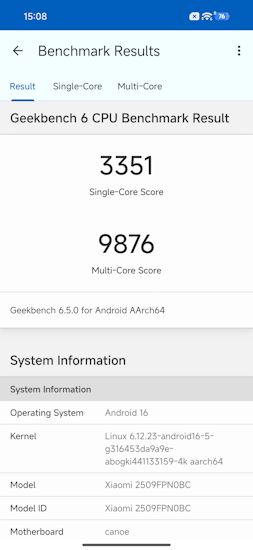
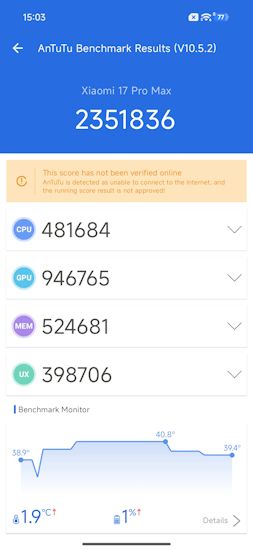
The Geekbench numbers are actually quite good and better than last year's Snapdragon 8 Elite, which scored 3,033 and 9,271 points in the single-core and multi-core scores, respectively.
Sadly, our unit couldn't sideload games either, and I couldn't test out any of the popular titles like CoD Mobile or Genshin Impact here.
Xiaomi 17 Pro Max Software and Updates
- Android 16-based HyperOS 3
- iOS 26-like aesthetics
- Lots of secondary display customisations including AI generated wallpapers
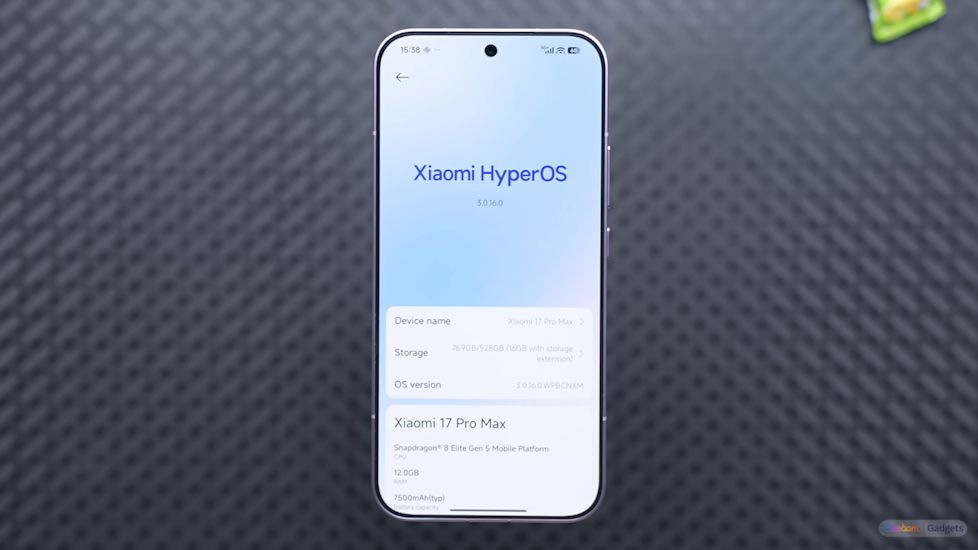
On the software side up, the Xiaomi 17 Pro Max runs on HyperOS 3 based on Android 16 right out of the box and this is easily the smoothest version of the OS I have seen so far. The UI has clearly been inspired by one of the highlight iOS 26 features – the Liquid Glass design and a lot of confusingly familiar app icons. Despite that, HyperOS 3 doesn’t feel like a cheap knockoff of Apple's mobile OS.
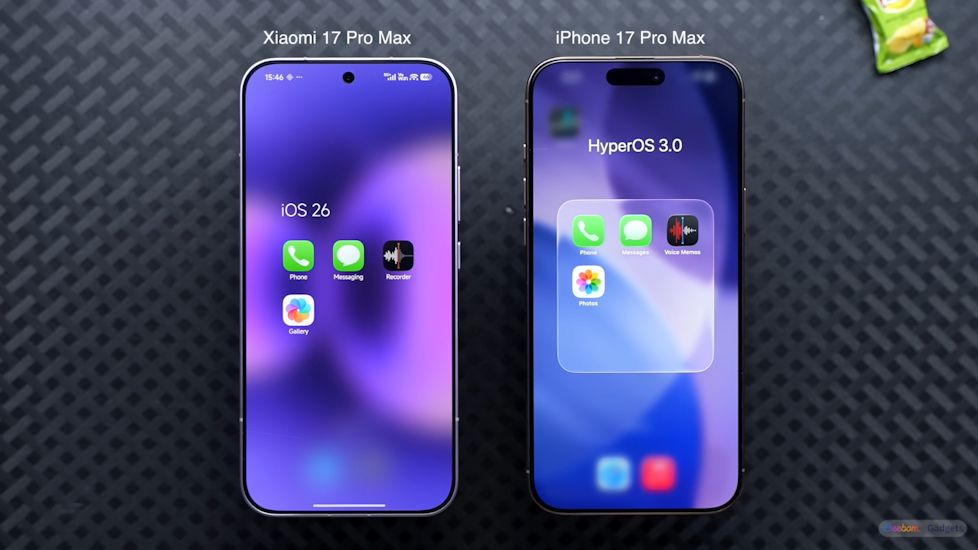
Everything, from the animations to the lock/unlock haptic, feels clean, cohesive and premium. Then, there are those HyperOS 3 features like new lock screen customisations, Xiaomi Super Island and more to make use of.
The rear display integration is very well-thought-out and seamless, too. For example, if you’re capturing a photo on the main display, simply turn the phone around, and you will see a pop-up to take to the secondary screen and vice versa. Next, you can pin things on the secondary display, like a body of text or an image that you’re viewing on the main screen, acting as an adorable little reminder of sorts.
In addition, you can also select from multiple clock styles and wallpaper designs alongside being able to type in any text of your choice. You can also further customise the size, font and colour of this text.
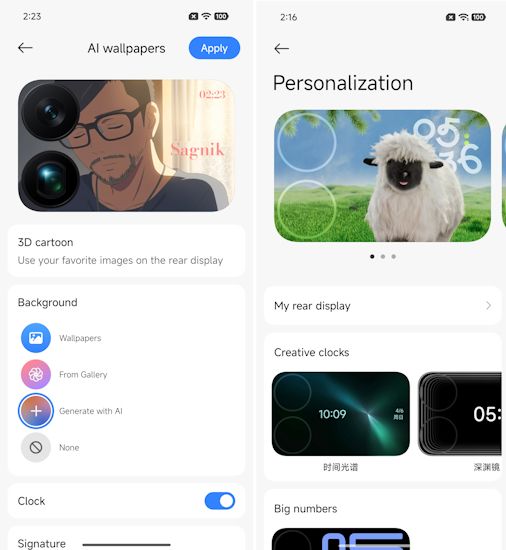
I also like how I didn’t have to frantically look for the rear display settings in the Settings panel. Instead, it was right there at the top for me to get into and start customising. The same goes for every other setting that I was looking for. The overall interface is quite intuitive and easy to use, if you ask me.
While I do wish I had more time to play around with the UI, it’s clear that Xiaomi has done a solid job here.
Xiaomi 17 Pro Max Camera Tested
- 50 MP Light Hunter 950L primary, 50 MP 5x periscope telephoto, 50 MP ultrawide
- 50 MP selfie shooter
- Can shoot up to 8K @ 30 FPS videos
The Xiaomi 17 Pro Max packs a Leica-branded quad-camera setup with all 50 MP sensors. On paper, this is one of the most ambitious camera setups I’ve seen on a Xiaomi flagship yet. Even in my brief time with the phone, I was heavily impressed with the cameras.
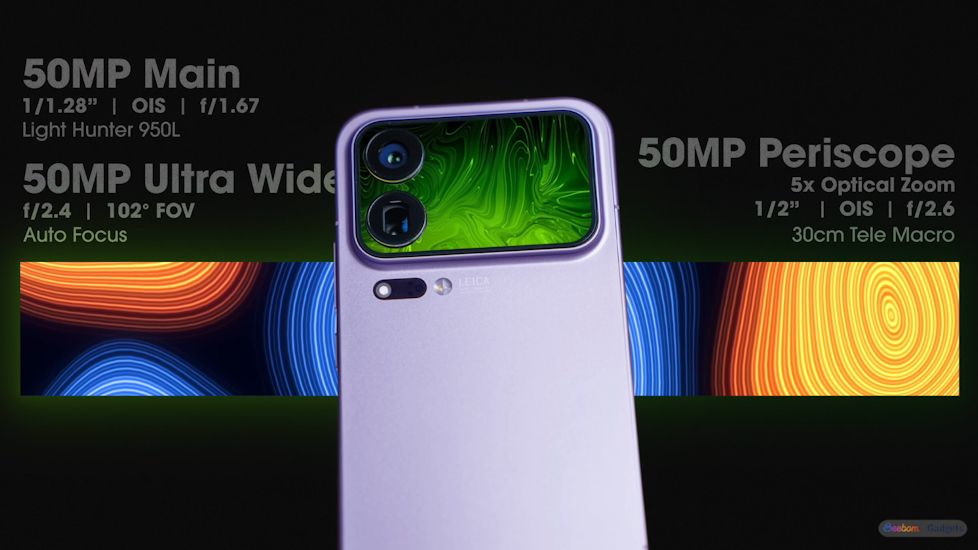
The main sensor impressed me the most and captured incredibly detailed shots with those true-to-life Leica-tuned colours. The contrast is a little heavy-handed at times, but the overall aesthetic is quite cinematic. Low-light photos come out bright and clean as well.
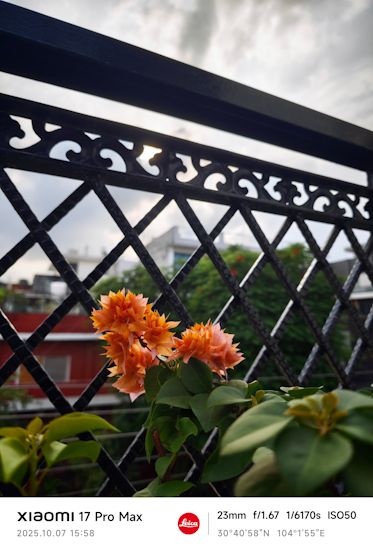
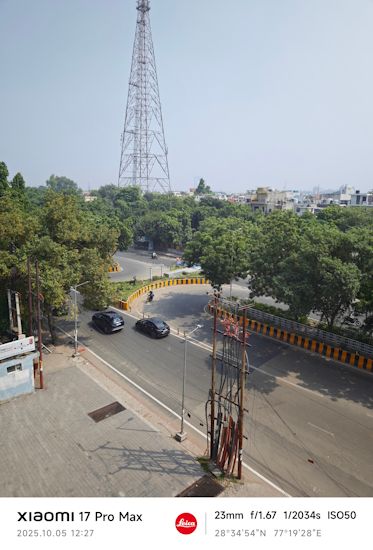
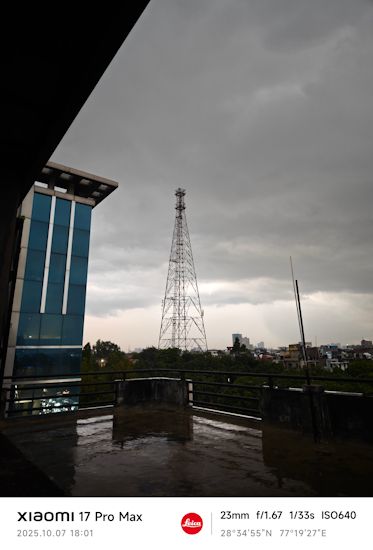
On the other hand, the 5x periscope telephoto gets those details right even at higher zoom levels. Xiaomi seems to have really worked on the colour consistency across the lenses, and switching between them is never awkward.
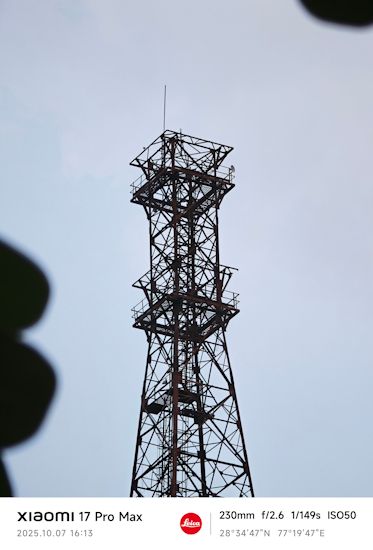
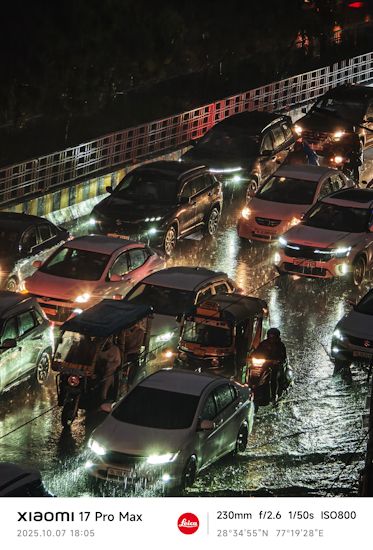
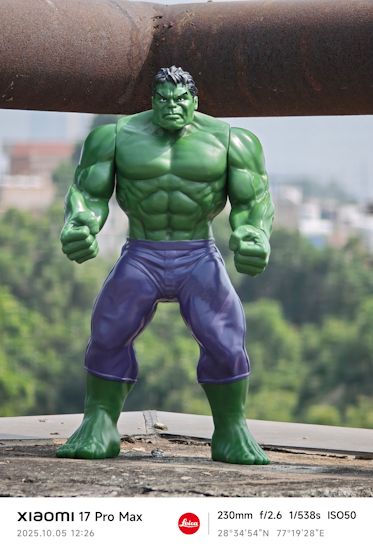
The ultra-wide is the only one that felt a little average. It’s 50 MP but there’s noticeable softness near the edges and the dynamic range isn’t as strong as the primary or telephoto. At night, the details smudge out even further and it's not pretty upon zooming in.
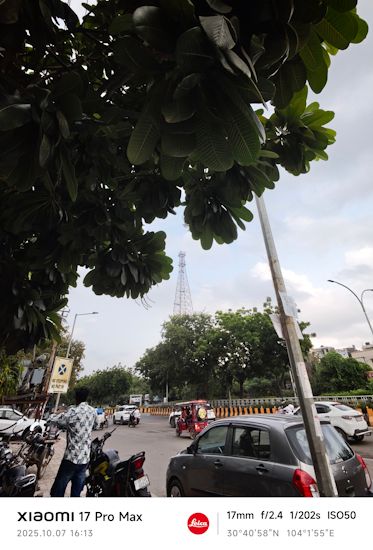
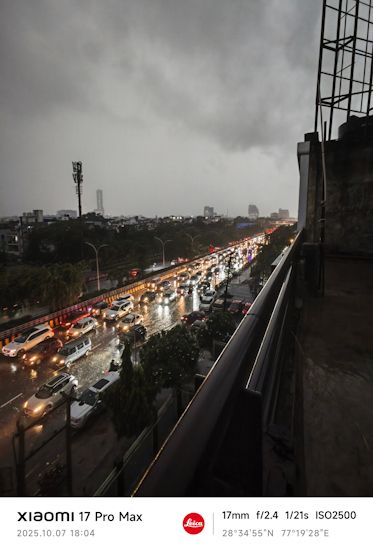
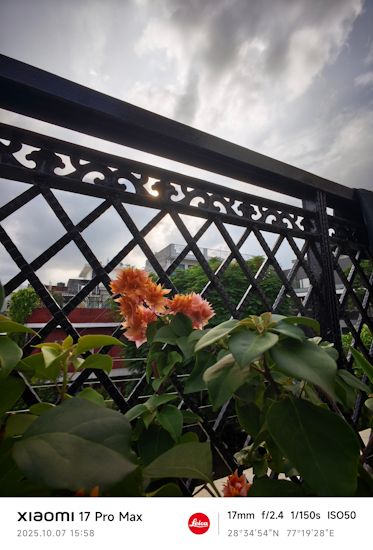
On the selfie side, the 50 MP front camera does a solid job and you can get some excellent portraits with stunning edge detection and background mapping with it. However, the fun really starts when you flip the phone can use the rear cameras for selfies. The fact that I could see myself in real time and frame my shot perfectly was super convenient. The Leica colour science is stellar and it’s good to get some professional-grade selfies out of it.

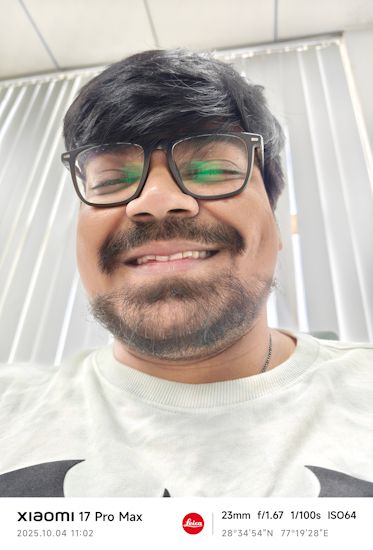
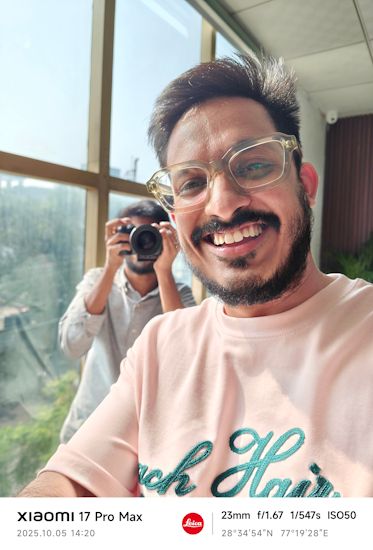
These are still early first impressions of the Xiaomi 17 Pro Max cameras. I’d still need to test it in detail to call it a true iPhone 17 Pro Max rival. But, from what I’ve seen so far, Xiaomi’s collaboration with Leica continues to deliver.
Xiaomi 17 Pro Max Battery and Charging
- 7,500mAh battery
- 100W fast charging, 50W wireless charging
- 1 to 100% in 35 minutes (as per the brand's claims)
Understandably, I couldn’t test out the monstrous 7,500mAh battery of the Xiaomi 17 Pro Max well. However, I did have it run 4K YouTube videos overnight, only to see it drain down from 100% to just 79%, which is mad impressive.
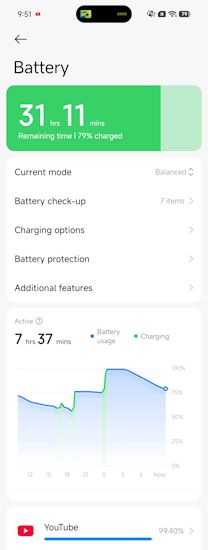
As for charging, I couldn’t drain the phone out completely and test it completely, either. However, the brand does claim to charge the device from 1 to 100% in 35 minutes, which seems accurate. The phone was at 50% when I charged it, and it took about 15 minutes to charge fully from there.
Bottom Line: Is the Xiaomi 17 Pro Max Worth It?
If you’ve made it to the end, you probably know where I stand. Yes, the Xiaomi 17 Pro Max borrows plenty from Apple. From its naming and design to some UI elements, there’s a lot of that influence, but it also confidently builds upon them.
The Xiaomi 17 Pro Max is thinner, lighter and packs a much bigger battery, faster charging and arguably more fun with that secondary display. So, my honest takeaway from my Xiaomi 17 Pro Max first impressions? Xiaomi might be copying Apple’s homework, but this time, it might have just done it better.


